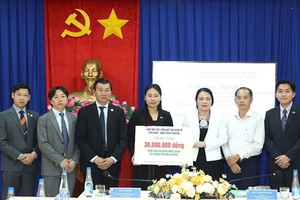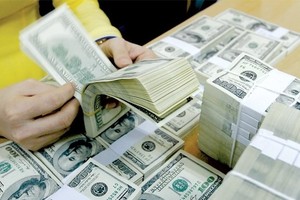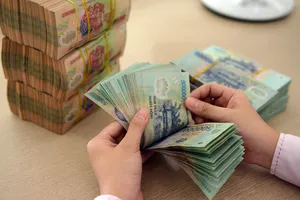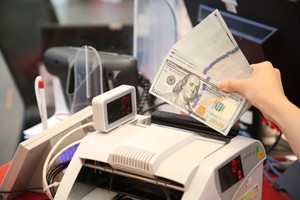Sharp increases in lending rates in the last quarter of the year destabilize the economy, economists said.
“The lending rate is increasing sharply to 20-22 percent per year, forcing businesses to raise their production output prices,” Hien said. “The middle- and low-income earners were consequently hit hard”.
Businesses said profits would be eroded by higher lending rates as well as the weakening dong, which has pushed up prices of imported materials.
Saigon Co.op, a major retail chain in southern provinces, will have to revise its earnings estimate this year, Bui Hanh Thu, deputy director of the chain, was quoted as saying in the Sai Gon Giai Phong newspaper.
Some analysts said high lending rates will sort out weak businesses, who depend a lot on bank loans. But Hien noted that the high rates will also make strong businesses hesitate to borrow money.
“With high lending rates, borrowers will be businesses who are badly in short of capital and willing to evade taxes or social insurance. Some joint-stock lenders will loan those businesses as they need a healthy business report to announce to their share holders at the shareholders’ meeting at the end of the year. Therefore the high lending rate will cause economic instability,” Hien warned.
The financial expert said high interest rates prompted many local businesses to seek capital from their own employees. “Employees are willing to lend money to their company as they earn higher rates and also get credits by showing supports to their company,” Hien said.
Interest rates in Vietnam also surged over the past two weeks after the central bank signaled tighter monetary policy to curb inflation and stabilize the foreign exchange market.
Banks were offering deposit rates of 12-13 percent last Monday, up from 11 percent early this month, lenders’ websites showed. The rates earlier jumped to 14-15 percent while loans were available at 17-18 percent, before falling to 16-17 percent last week, Sai Gon Giai Phong newspaper said.
“Local banks are offering an unfair partiality in deposit rates to big clients,” financial expert Dinh The Hien told Sai Gon Dau Tu Tai Chinh newspaper.
The middle- and low-income earners can make around 12 percent per year out of their bank savings while large depositors, mainly financial companies and investment funds, with deposits of more than VND10 billion (US$500,000) can get special rates of 14-15 percent, Hien said.
He also added that state-run companies in crucial sectors, including power and gasoline, are offered loans at preferential interest rates of 13.5 percent per year.
The State Bank of Vietnam will make some moves to cope with the fluctuation on banking rates, said Nguyen Ngoc Bao, head of the state bank’s Monetary Policy Department. “The State Bank stabilized the interbank deposit rates of the domestic currency,” said Bao.
Interbank rates plunged to 8.5-10 percent per year from 23-24 percent at last weekend, Sai Gon Giai Phong newpaper said.
The State Bank also asked local lenders to keep their interest rates relatively close to each others, which will prevent the monetary market from fluctuating, Bao said.
























